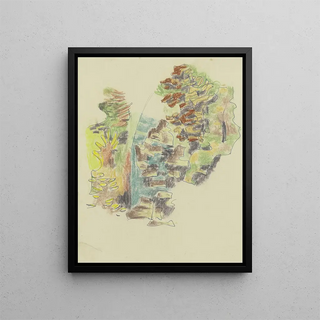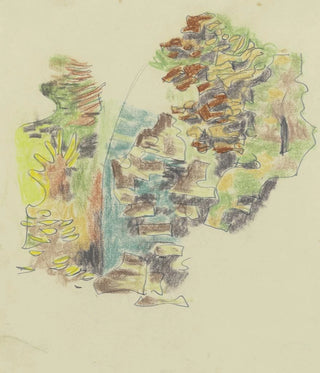Art print | Study of Plants 4 - August Babberger


View from behind

Frame (optional)
August Babberger's artwork "Study of Plants 4" is a true ode to nature, a vibrant tableau where the delicacy of botanical forms blends with a refined color palette. At first glance, this piece captures the eye with its striking realism and its ability to evoke a secret garden, an intimate space where each plant tells a story. Babberger, through this work, invites the viewer to meditative contemplation, a sensory journey into the heart of flora. The art print of this piece allows for a rediscovery of the beauty of botanical details, while offering a window into the poetical universe of the artist.
Style and uniqueness of the work
What makes "Study of Plants 4" particularly unique is how Babberger manages to fuse meticulous observation with artistic interpretation. The contours of the leaves, the nuances of the petals, and even the texture of the stems are rendered with a precision that borders on photographic. However, far from being a simple reproduction of nature, the artist breathes life into his subjects, making them almost animated. The colors, carefully chosen, evoke changing seasons and shifting lights, creating an atmosphere that is both serene and dynamic. The composition, both harmonious and bold, captures attention while providing visual depth that encourages exploration of every detail.
The artist and his influence
August Babberger, whose artistic journey is marked by a passion for natural sciences and art, stands out for his ability to combine scientific rigor with artistic sensitivity. Influenced by the great masters of realism, he has developed a style that is uniquely his own, where nature is celebrated in all its splendor. Babberger is not merely an observer of plants; he is an interpreter, a translator of the emotions they evoke. His work has inspired many contemporary artists, who see in him a pioneer of an approach where art and nature meet harmoniously. Through his creations, he reminds us of the importance of observation and contemplation, values that still resonate today in the art world.

Matte finish

View from behind

Frame (optional)
August Babberger's artwork "Study of Plants 4" is a true ode to nature, a vibrant tableau where the delicacy of botanical forms blends with a refined color palette. At first glance, this piece captures the eye with its striking realism and its ability to evoke a secret garden, an intimate space where each plant tells a story. Babberger, through this work, invites the viewer to meditative contemplation, a sensory journey into the heart of flora. The art print of this piece allows for a rediscovery of the beauty of botanical details, while offering a window into the poetical universe of the artist.
Style and uniqueness of the work
What makes "Study of Plants 4" particularly unique is how Babberger manages to fuse meticulous observation with artistic interpretation. The contours of the leaves, the nuances of the petals, and even the texture of the stems are rendered with a precision that borders on photographic. However, far from being a simple reproduction of nature, the artist breathes life into his subjects, making them almost animated. The colors, carefully chosen, evoke changing seasons and shifting lights, creating an atmosphere that is both serene and dynamic. The composition, both harmonious and bold, captures attention while providing visual depth that encourages exploration of every detail.
The artist and his influence
August Babberger, whose artistic journey is marked by a passion for natural sciences and art, stands out for his ability to combine scientific rigor with artistic sensitivity. Influenced by the great masters of realism, he has developed a style that is uniquely his own, where nature is celebrated in all its splendor. Babberger is not merely an observer of plants; he is an interpreter, a translator of the emotions they evoke. His work has inspired many contemporary artists, who see in him a pioneer of an approach where art and nature meet harmoniously. Through his creations, he reminds us of the importance of observation and contemplation, values that still resonate today in the art world.






